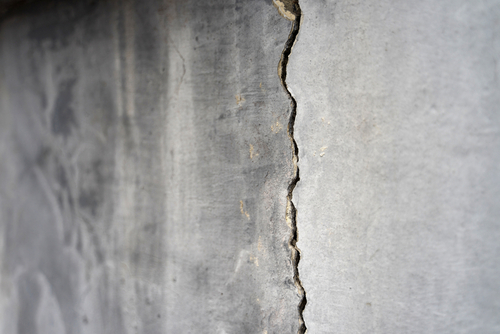How Does Climate Affect Concrete?
Climate plays a significant role in the durability and longevity of concrete structures. Extreme temperatures, fluctuating weather patterns, and humidity levels can all have an impact on the strength and stability of concrete. In this blog, we will explore how climate can affect concrete and what steps can be taken to mitigate any potential damage.
Temperature Fluctuations
One of the primary ways in which climate can affect concrete is through temperature fluctuations. Concrete is susceptible to expansion and contraction as temperatures rise and fall. In hot climates, the high temperatures can cause concrete to expand, leading to cracking and spalling. On the other hand, in cold climates, freezing temperatures can cause concrete to contract, also resulting in cracks and fissures. It is essential to consider the temperature range of the climate when designing and constructing concrete structures to ensure their longevity.
Moisture and Humidity
Moisture and humidity levels in the air can also have a significant impact on concrete. Excessive moisture can penetrate concrete structures and lead to corrosion of the reinforcing steel inside. In humid climates, the moisture in the air can also cause concrete to absorb water, making it more prone to cracking and spalling. Proper waterproofing and sealing of concrete structures can help mitigate the effects of moisture and humidity on concrete.
Freeze-Thaw Cycles
In regions with cold climates, freeze-thaw cycles can pose a serious threat to concrete structures. When water seeps into concrete and freezes, it expands, putting pressure on the structure and causing cracks to form. As the ice thaws and water reenters the cracks, it can further weaken the concrete and lead to more significant damage over time. Properly designed and reinforced concrete structures can help minimize the impact of freeze-thaw cycles on concrete.
UV Exposure
In sunny climates, exposure to ultraviolet (UV) radiation can also affect the durability of concrete. UV rays can cause the surface of concrete to deteriorate and fade over time, resulting in a chalky appearance. Additionally, UV exposure can weaken the surface of concrete, making it more susceptible to cracking and spalling. Applying a UV-resistant sealer to concrete surfaces can help protect them from the harmful effects of UV radiation and extend their lifespan.
Air Pollution
Air pollution can also play a role in the deterioration of concrete structures. Pollutants in the air can react with the concrete surface, causing it to corrode and degrade over time. Acid rain, in particular, can eat away at the surface of concrete, leading to discoloration and structural damage. Regular cleaning and maintenance of concrete structures in urban areas can help combat the effects of air pollution and extend the life of the concrete.
How to Mitigate the Effects of Climate on Concrete
There are several steps that can be taken to mitigate the effects of climate on concrete structures. Proper design and construction techniques, as well as regular maintenance, are vital to ensuring the longevity of concrete in various climatic conditions. Here are some tips for protecting concrete from the effects of climate:
1. Select the right concrete mix: Different climate conditions require different concrete mixes. Consult with a professional engineer or contractor to determine the appropriate mix for your specific climate.
2. Ensure proper curing: Proper curing of concrete is essential to its strength and durability. Keep concrete structures moist and covered during the curing process to prevent cracking and ensure a solid finish.
3. Use reinforcing materials: Reinforcing materials such as steel rebar can help strengthen concrete and minimize the effects of temperature fluctuations and moisture.
4. Apply sealant: Applying a high-quality sealant to concrete surfaces can help protect them from moisture, UV radiation, and air pollution. Regularly reapplying sealant can extend the life of the concrete and maintain its appearance.
5. Regular maintenance: Regular inspection and maintenance of concrete structures are essential for identifying and addressing issues before they escalate. Repairing cracks, sealing joints, and cleaning concrete surfaces can help prevent further damage and extend the life of the concrete.
Summary
Climate can have a significant impact on the durability and longevity of concrete structures. By understanding how climate affects concrete and taking proactive steps to mitigate any potential damage, you can ensure that your concrete structures stand the test of time in various climatic conditions. From temperature fluctuations to moisture levels, UV exposure, and air pollution, there are many factors to consider when designing, constructing, and maintaining concrete structures. By following proper construction techniques and regular maintenance practices, you can protect your concrete from the effects of climate and enjoy durable and long-lasting structures for years to come.
Need a Paving Company in Glendale, AZ?
Categorised in: Concrete
This post was written by admin

